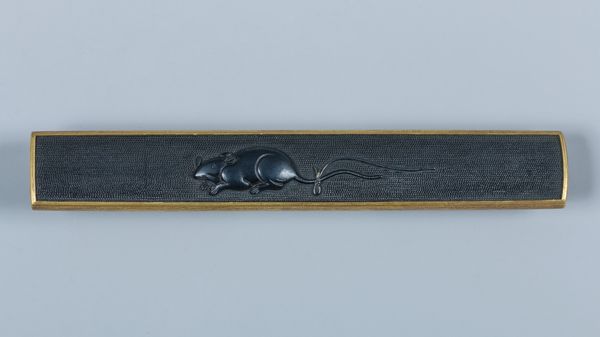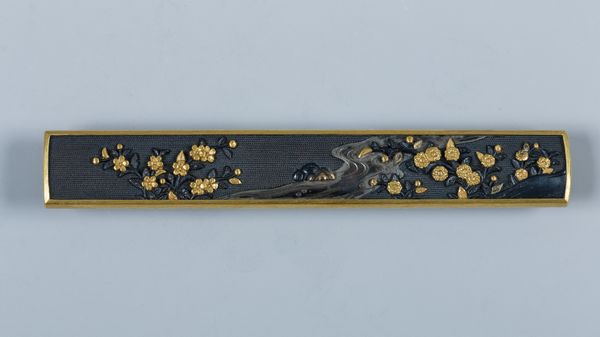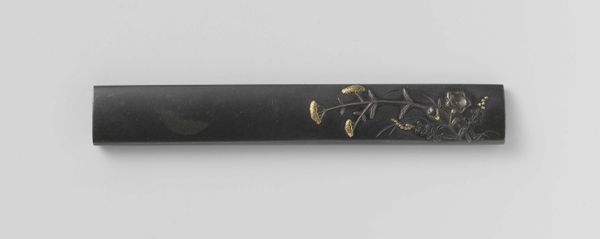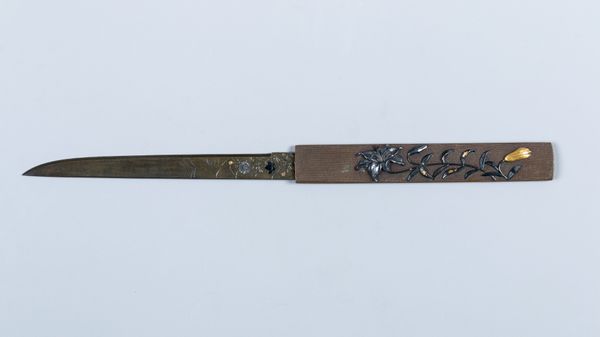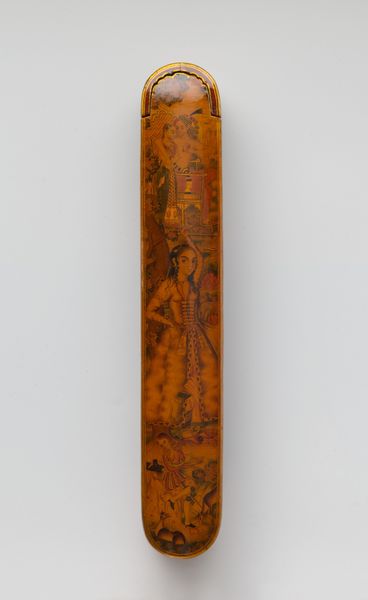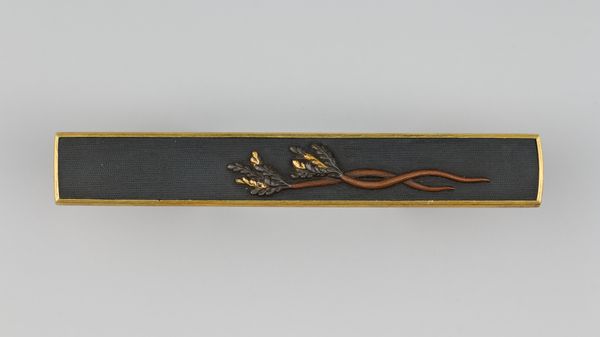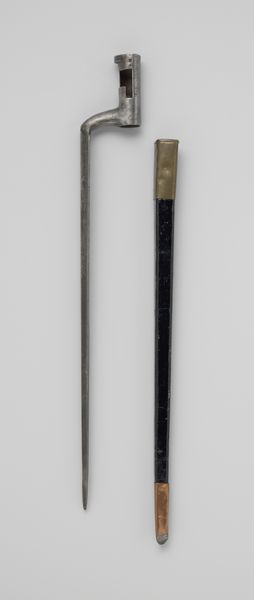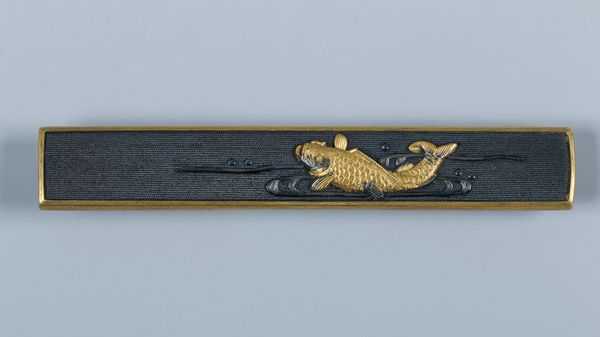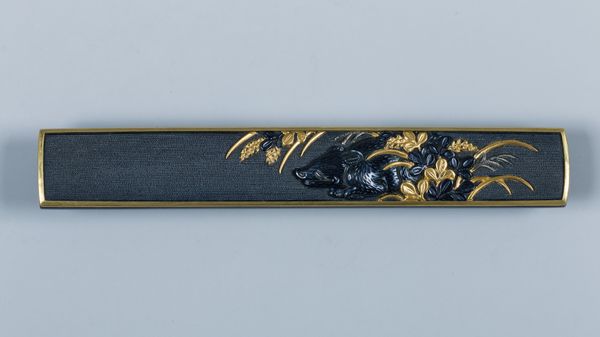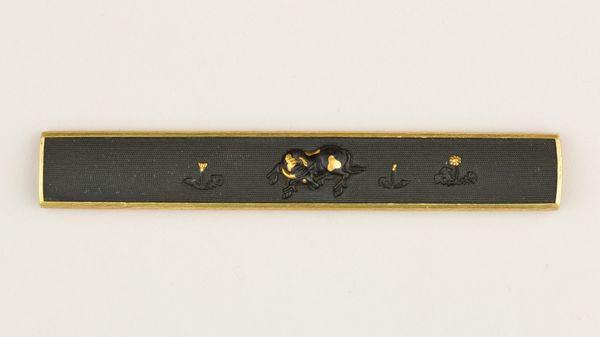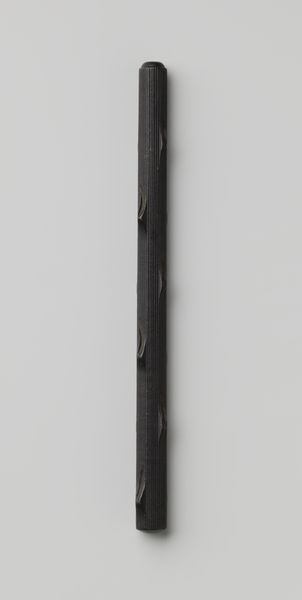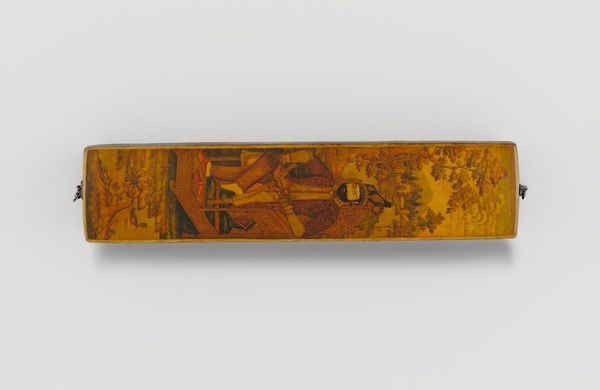
metal, sculpture, engraving
portrait
metal
asian-art
japan
sculpture
armor
decorative-art
engraving
sword
miniature
Dimensions: L. 3 13/16 in. (9.7 cm); W. 9/16 in. (1.4 cm)
Copyright: Public Domain
Curator: This elegant knife handle, or kozuka, dates to between 1625 and 1675 and is currently held at the Metropolitan Museum of Art. It is the work of Gotō Kenjō. Editor: The immediate impression is one of refined practicality, almost a tension between its function and ornate design. You have this beautifully rendered figure in what appears to be gold inlay against a dark, textured metal ground, all framed by a delicate, gilt border. Curator: Exactly. As a decorative fitting for a knife, the kozuka transcends mere utility. Considering it was made during the Edo period in Japan, we must consider the strict social hierarchies and sumptuary laws that regulated adornment across different classes. What does the image of the figure suggest to you in relation to these power dynamics? Editor: It feels tied to ideas about patronage and consumption. It makes me wonder about the labor that went into crafting this relatively small object—the silversmithing, the engraving, the gold inlay. The person depicted is standing gracefully and holding what appears to be a fan, seemingly an individual from the upper class or perhaps associated with the court. Curator: Yes, it’s important to consider these artistic choices reflecting a longing towards a cultured elite lifestyle but existing amidst restrictions that enforced stark divisions between classes. While artisans might have had considerable skill, their social standing and material expressions were carefully surveilled. Editor: Thinking about the kozuka's materiality further – metal as a carrier of memory and as a crafted product – reminds me that swords, and by extension even knives, held considerable symbolic and martial power. Who owned the sword, and how was its aesthetic appearance, including details like this kozuka, understood? Was this a subtle expression of personal aspiration within regulated structures? Curator: Those are salient questions to consider. When interpreting objects like these, exploring issues of social power, artistic agency, and historical regulation are of course invaluable when unpacking narratives embedded within such objects. Editor: It has indeed been insightful to look past simply appreciating the decorative element to reflecting on the complex socio-economic structures inherent within its creation and use. Curator: Agreed.
Comments
No comments
Be the first to comment and join the conversation on the ultimate creative platform.
